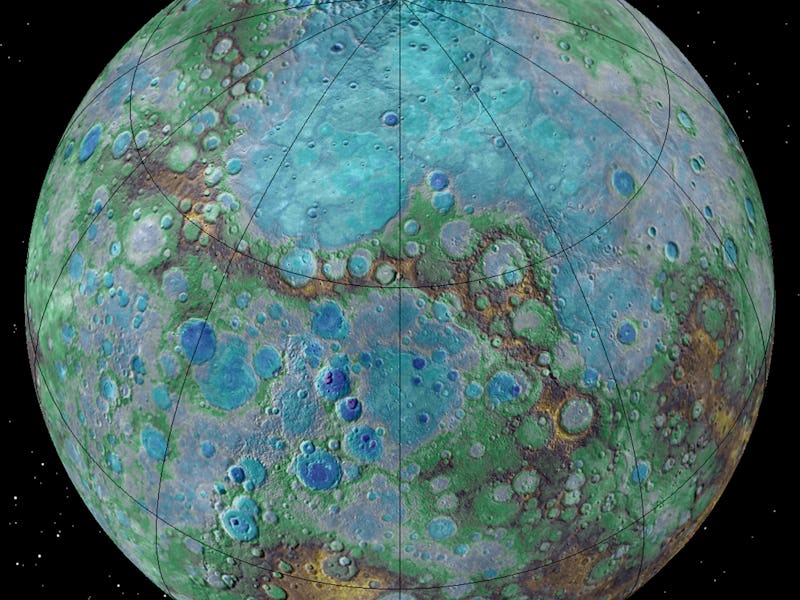Why Scientists Are Stoked on Mercury's Tectonic Activity
We have earthquakes. They have Mercury-quakes.

It’s official: Planet Mercury is home to recent tectonic activity, caused by a liquid, shrinking core and contracting crust.
Too bad for Earth, which until now was believed to be the only solar system planet with active tectonics. And that’s pretty neat, because some scientists believe that tectonics and its accompanying earthquakes and volcanism are crucial ingredients for alien life. If Earth isn’t alone in maintaining tectonic activity over billions of years, maybe the conditions necessary to support life aren’t so rare, either.
Researchers, led by Thomas Watters of the Smithsonian Institution, looked at images of Mercury from NASA’s MESSENGER mission, taken not long before the spacecraft’s planned collision with the planet on April 30, 2015. From that close vantage point, they picked out small fault scarps, where the landscape suddenly changes in elevation as a result of a vertical shift. Imagine that, as the core cools and shrinks, the solid crust pushes against itself under increasing pressure, until it releases and one side of the fault pushes up above the other in a violent Mercury-quake.
Scientists observed young fault lines on the surface of Mercury.
In a paper published online Monday in Nature, the scientists propose that the smallest faults can be no older than 50 million years old, or else all evidence of them would have been obliterated by the constant onslaught of comet and asteroid impacts.
The findings corroborate earlier evidence of a magnetic field around the planet, which also suggests the continued presence of a partly molten core. That’s surprising, since the general consensus had been that Mercury, which is similar in size to Earth’s moon, would have cooled off and quieted down by now.
In order for a planet to sprout life, it requires (as far as we know) a certain set of habitable, Earth-like conditions. And, for life to evolve to more complex forms, a planet must remain habitable for a very, very long time. That’s where tectonics come in. The theory is that tectonics act like a global thermostat, keeping temperatures within a more livable range.
When the planet gets hot, rainfall and erosion rise, which causes more carbon dioxide to pulled out of the atmospheric system, allowing for more heat to escape the atmosphere, explains Craig O’Neill to The Conversation. If things get too chilly, the planet freezes over, erosion slows down, and CO2 from volcanic activity simply builds up in the air, like a warm blanket.
Mercury is decidedly inhospitable to life. Its thin atmosphere and proximity to the sun result in daily temperature swings from −280 to 800 degrees Fahrenheit. But if tectonic activity persists there, maybe it’s less rare on more Earth-like planets elsewhere than scientists had expected. That ups the chances that we’re not alone in this big universe, after all.